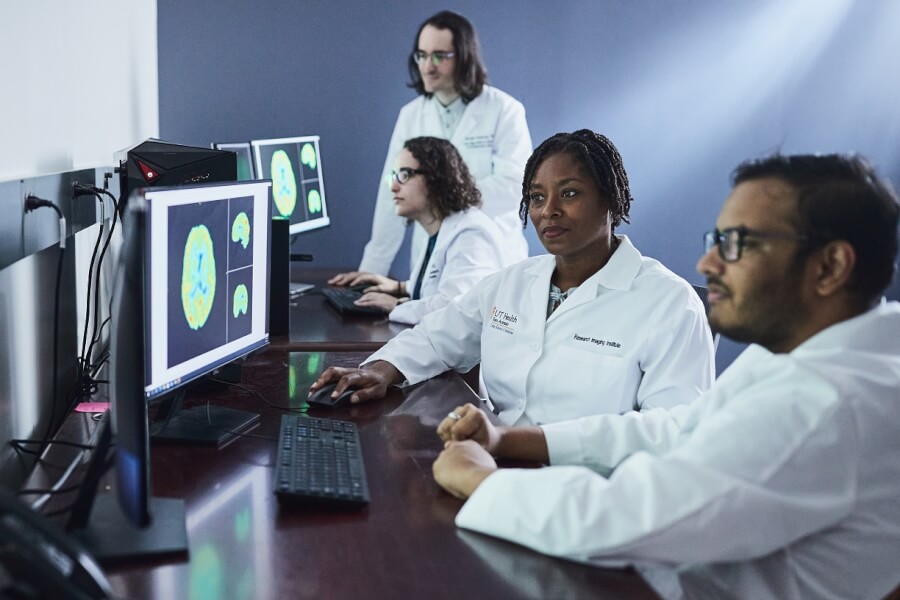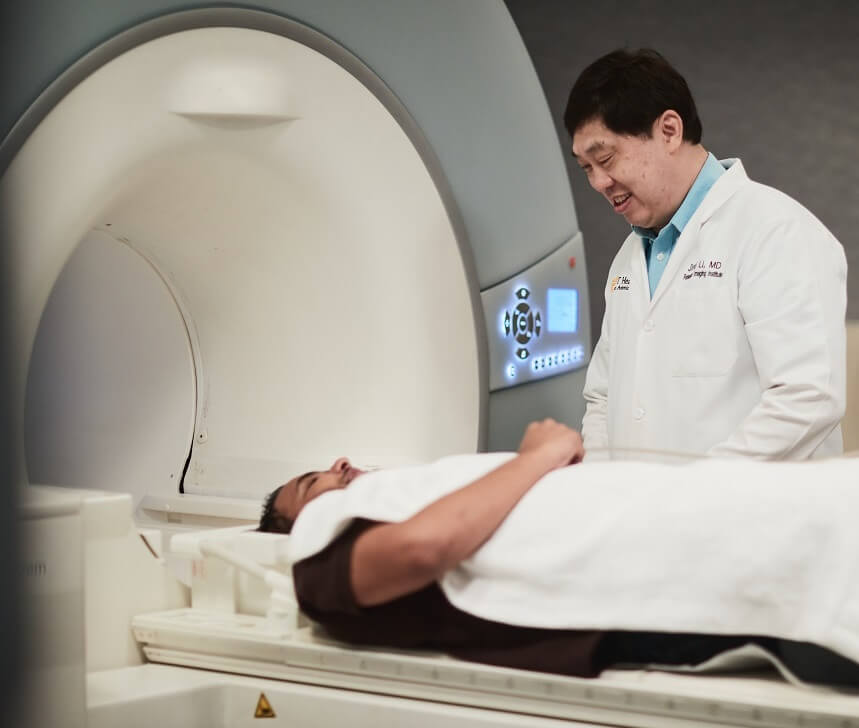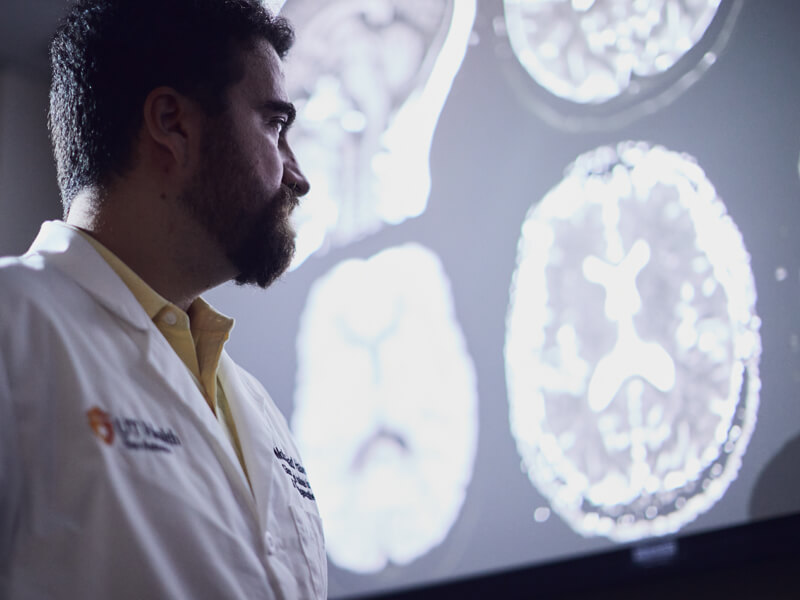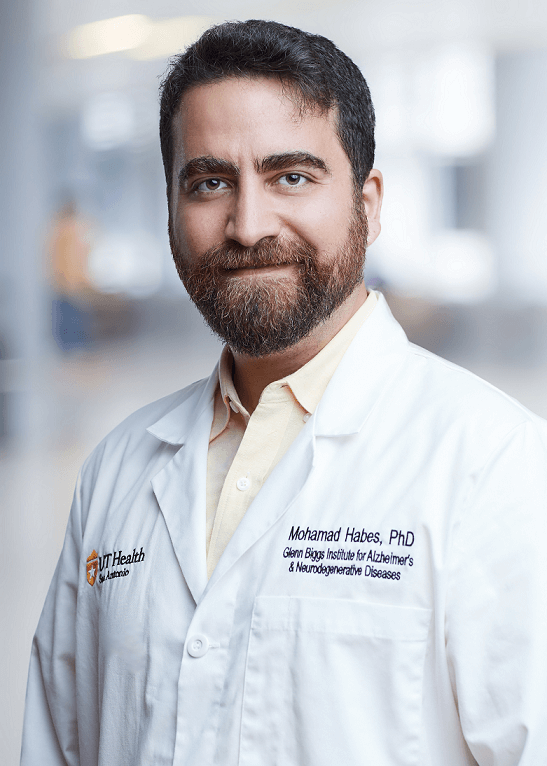Stroke has occurred several times in your family. Aunt Mary suffered hers at the dinner table on a holiday. The fork she was holding fell to the table. Grandmother Sadie’s happened during her last years when you were away at college. Her thinking was never sharp again.
Yes, your family history includes stroke and dementia — and you seek an evaluation by experts at The University of Texas Health Science Center at San Antonio, also called UT Health San Antonio. The health science center is home to the Glenn Biggs Institute for Alzheimer’s and Neurodegenerative Diseases. The Biggs Institute is a national center of excellence that, together with UT Rio Grande Valley, is the state’s only Alzheimer’s Disease Research Center (ADRC) as designated by the National Institute on Aging.

In the neurology clinic at UT Health San Antonio’s Medical Arts and Research Center (MARC), your doctor recommends a brain MRI. You have it done in the imaging suite a few floors down.
What happens next is a quantum leap above standard diagnostic methods employed in neurology clinics for the last century.
Professors at UT Health San Antonio have developed an artificial intelligence (AI) tool that accurately counts brain lesions on MRIs in seconds. Because of this, the neurologist is able to tell you the results of your scan before you leave the doctor’s office. You have enlarged spaces around the arteries and veins in your brain. The spaces, which number 600 on MRIs, are filled with cerebrospinal fluid. The neurologist recommends preventive care to guard against a stroke.
You are 61 years old with many years of productivity remaining — family to love and plans to travel and do volunteer work once you retire. It’s upsetting that these tiny spaces show up on your MRI. But even more sobering is the fact that they might have gone undetected until a disabling or fatal stroke ended your dreams.
“Brain lesions are very difficult to quantify without AI,” said Mohamad Habes, PhD, assistant professor of radiology at the UT Health Science Center and director of the Biggs Institute neuroimaging core.

In a study published this year, Habes and colleagues from eight institutions demonstrated the AI tool’s utility in identifying and counting enlarged perivascular spaces (ePVS’s). These spaces, filled with cerebrospinal fluid, surround arteries and veins and are a marker of cerebral small-vessel disease that can lead to stroke.
“We have developed an innovative deep-learning tool to precisely count every single enlarged perivascular space in the brain and provide us with a map of the patient’s small-vessel disease,” Habes said.
Before this tool, ePVS’s were ignored due to the difficulty of recognizing them on MRI.
“On average, a middle-aged individual might have 500 or 600 of these small spaces on an MRI,” Habes said. “Think about a neuroradiologist who is going to sit down and count all of them. That’s not really going to happen. He or she would spend one or two hours per scan, or even more, and that amount of laborious effort is not feasible in the workflow of a busy clinic.”
The automated deep-learning method for detecting these brain lesions is novel. “We have trained an algorithm with expert knowledge to be able to quantify these lesions on its own,” Habes said. “This tool recognizes them, tells us their exact locations, counts them and gives their volumes. It provides us a ton of information about them, far more than what a human can do.”
“This AI tool recognizes brain lesions,
tells us their exact locations, counts them
and gives their volumes. It provides us a ton
of information about them, far more than
what a human can do.”— Mohamad Habes, PhD, director, Glenn Biggs Institute neuroimaging core, UT Health San Antonio
This is a great breakthrough for the Biggs Institute’s ADRC, which is focusing a lot on cerebrovascular disease and its contribution to dementia, Habes said. “We think our novel AI methodology can benefit large-scale studies conducted across the nation’s ADRCs,” he said.
The AI tool leverages the power of UT Health Science Center San Antonio’s Genie supercomputer.
Back in the clinic, findings made possible by this new technology have made you aware of your increased risk for stroke. You are now even more motivated to make healthy lifestyle changes that give yourself the best shot at living stroke-free for the remainder of your days.
Read more about UT Health San Antonio brain research and other discoveries aimed at curing diseases at AdvancingBrainHealth.org and BiggsInstitute.org.
The University of Texas Health Science Center at San Antonio (UT Health San Antonio), a primary driver for San Antonio’s $44.1 billion health care and biosciences sector, is the largest academic research institution in South Texas with an annual research portfolio of more than $360 million. Driving substantial economic impact with its six professional schools, a diverse workforce of 7,900, an annual operating budget of $1.23 billion and clinical practices that provide 2.6 million patient visits each year, UT Health San Antonio plans to add more than 1,500 higher-wage jobs over the next five years to serve San Antonio, Bexar County and South Texas. To learn about the many ways “We make lives better®,” visit UTHealthSA.org.
The Glenn Biggs Institute for Alzheimer’s and Neurodegenerative Diseases is providing comprehensive dementia care while advancing treatment through clinical trials and research. The Biggs Institute is a National Institute on Aging (NIA)-designated Alzheimer’s Disease Research Center (ADRC). In addition to patient care and research, the Biggs Institute partners with the School of Nursing at UT Health San Antonio to offer the Caring for the Caregiver program.



